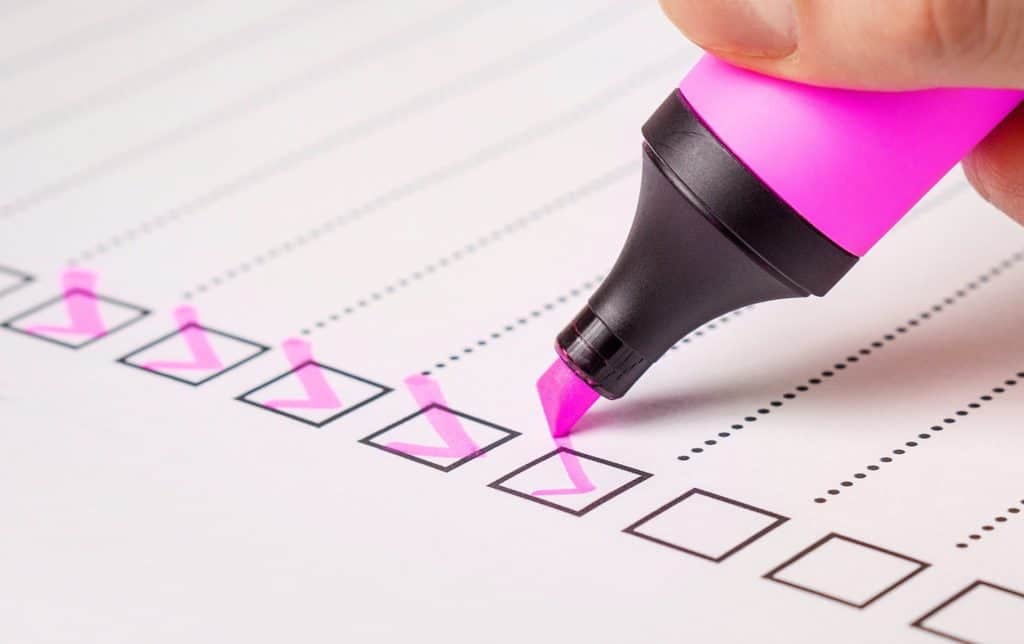🖊 This article was last updated on September 1, 2021
Our most important and best work was born in a flow state, wherein we gave our undivided attention to one task for long stretches of time.
But in the digital age, our attention span continues to fall. According to researcher Gloria Mark from the University of California, Irvine, it is found that the average information worker’s duration of focus is only about 40 seconds. As people frequently change their focus, their productivity falls and their stress levels go up.
If we want to be more productive and have less stressful lives, we need to reign in our hyperactive minds. As scientist and inventor Alexander Graham Bell said:
“Concentrate all your thoughts upon the work at hand. The sun’s rays do not burn until brought to a focus.”
Alexander Graham Bell
This article covers nine tips to help us laser-focus our attention on the things that matter most.
1. List down the important things you need to do, and build these into your schedule.
A key component of improving your concentration is allowing yourself to zero in on the most important things. Using a time management matrix allows you to categorize your to-do list based on your tasks’ importance and urgency.
When you are able to allot time for the critical tasks (or delegate them to capable hands), you can better concentrate on what you need to do. You will be worrying less because you know you’ve got everything covered. You are also less likely to be pulled away from your work to put out fires caused by project delays and poor planning.
If possible, do only one critical thing per day. You can also dedicate specific days for each aspect of your business, or for working on a major output for each client.
Setting priorities on a daily basis (and following through on them!) is not an easy task. I’m biased, but I have a great accountability coaching program that can help you with that.

2. Shield yourself from distractions.
Now that you’ve identified what needs to be done, you need to dive into it. But then comes that familiar sound–a notification–you’ve got X new messages. You can feel the urge to pick up your phone, then check your email, then maybe browse social media for a few seconds.
While a quick phone or email check might seem harmless, it is actually costly in terms of your productivity. Each time you switch tasks, it takes you about 23 minutes to truly get back to it.
Of course, you can use will power to keep yourself from checking messages. But will power is a finite resource. Instead, use the options at your disposal to minimize distractions. You can:
- Put your phone on silent mode.
- If you don’t need to be online to get your work done, disconnect for a while.
- Put your phone in a different room or just keep it out of your reach.
If keeping in touch via social media is important to you, schedule it into your calendar. Use it as your reward in between hours of focused work.
3. Use your time wisely.
There are several ways to be smart with your time. Here are a few.
Identify your prime time of productivity and schedule your most important tasks during those hours.
In his book The Power of When, Dr. Michael Breus discusses four circadian rhythm personalities: bears, lions, wolves, and dolphins. Our current 9-5 work hours fit bears best, as they are more productive in the morning and their energy dips by mid-afternoon. Lions are most productive in the early morning and afternoon. Wolves’ energies peak at noon to early afternoon, then again in the evening. Lastly, dolphins are most productive in the mid-morning and in the evening.
Identify and leverage your own rhythm. Schedule the most important tasks, or those requiring focused work, during your most productive hours.
Apply the Pareto principle (or the 80-20 Rule).
According to the Pareto principle, 20 percent of our tasks yield 80 percent of our results. Identify what your 20 percent is, and focus on those. If you are working with a team, make sure they are also focusing on the 20 percent that makes the most difference for your business.
“Eighty percent of business is knowing what not to do”
Tom Bilyeu
4. Work on something you’re interested in.
Time flies when we are doing something we like.
As much as you can, work on something aligned with your interests or your curiosity.
This is not always possible, I know. No matter what field you’re in or the position you hold, there will be tasks you love and others you absolutely dislike.
It’s up to you to find a way to make it interesting. For example, attach a reward at the end of your tasks. In my case, I made building new habits more fun by using Habitica. It’s a task management tool that turns habit formation into a fun role-playing game (RPG).

5. Chunk into three’s.
The most important tasks in our list often require more than one action, or they may be too huge to finish in just one sitting.
In this case, it’s best to break down a big project into doable steps.
For example, if you want to finish a report today, you can chunk it into three by: (1) making a detailed outline, then (2) drafting the report, and finally, (3) revising and proofreading your work.
Another way to use chunking is to group related tasks together. For example, you can group three tasks requiring phone calls, or three to-do’s related to a specific project. In your business, you can chunk tasks related to billing and finance.
Another brilliant strategy recommended by Tony Robbins’ team is grouping activities based on the common areas of life mastery such as health, relationships, work, finances, and spirituality. The emphasis here is on your desired outcomes for these life areas (which will keep you motivated), instead of merely checking off things on your to-do list.
Following this strategy, you can chunk health/spirituality-related activities together, such as working out, meditating, and keeping a gratitude journal.
You can combine chunking with the Pomodoro technique. After chunking your tasks, work in intervals of 25 minutes (one pomodoro), followed by a 5-minute break. After three pomodoros, take a longer break to reward yourself and to relax.
6. Take short breaks.
Working nonstop for long hours might seem productive, but there’s something else that can beat that. A University of Illinois study found that participants who were given quick diversions during a prolonged task were able to maintain their performance level. On the other hand, the performance of individuals who stayed focused on their task alone declined over time.
So build in short breaks into your schedule. It’s good for your eyes, your body, and your brain.
7. Meditate
Several studies have indicated the numerous benefits of mindfulness meditation, among which is an improved capacity to concentrate on tasks.
If you feel you’re too busy to sit and “do nothing,” you can start meditating during the short breaks we mentioned above.
As you make meditation a regular part of your day, you will be sharpening your focus, coping better with stress, and even keeping your aging brain in better shape.
8. Get enough sleep.
Sleep deprivation leads to lower concentration, which then results in more errors at work, low productivity, and poor decision-making abilities. Meanwhile, an inconsistent sleep schedule also has negative impacts on one’s cognitive functions.
To ensure that our brains are in tip-top shape for our tasks, it is important that we get enough sleep, and stick to a regular sleeping schedule.
9. Play some music.
According to Dr. Masha Godkin, a professor at Northcentral University’s Department of Marriage and Family Sciences, “Music activates both the left and right brain at the same time, and the activation of both hemispheres can maximize learning and improve memory.”
Classical music, new age music, and nature sounds are good bets, because they do not have lyrics that cause your mind to wander off.
In my case, functional music from Brain.FM are my go-to tracks whenever I want to easily reach a flow state.
Whatever your musical preferences are, stick to the ones that do help you concentrate better. This could mean playing the same upbeat songs over and over, or avoiding tracks that bring up painful memories.
Concentrating on one task for long periods may feel like a punishment at first. If you’re so used to taking peeks at your social media accounts, keeping your phone out of your reach can feel like a grown-up version of the marshmallow test.
Start by choosing one habit above to work on, and notice how it helps you concentrate better. Doing so will motivate you to stick to a new habit, and in time, adopt another habit that will further improve your focus muscle.
- These Black Friday deals will skyrocket your productivity (2021 edition) - November 11, 2021
- How to Stay Productive as a Digital Nomad - December 23, 2019
- When is the right time to outsource? - December 3, 2019

